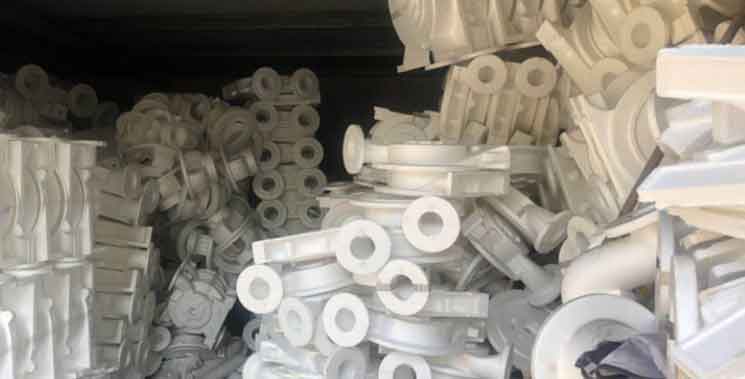
Lost foam casting, also known as evaporative pattern casting or full mold casting, is a casting process that uses expendable foam patterns to create complex metal parts. It offers several advantages such as design freedom, cost-effectiveness, and excellent surface finish. Here is a comprehensive guide to the lost foam casting process:
1. Pattern Creation:
- A pattern is created by molding expandable polystyrene (EPS) foam using CNC machining or by hand carving.
- The pattern represents the desired shape of the final metal part, including intricate details and features.
2. Pattern Assembly:
- The foam patterns are assembled together to form a pattern cluster, which may include multiple parts that will be cast together.
- The pattern cluster is then attached to a pouring system, which consists of sprue, runners, and gates to allow for the flow of molten metal.
3. Coating:
- The pattern cluster is coated with a refractory material, such as ceramic slurry or refractory paint.
- The coating creates a ceramic shell around the foam patterns, providing dimensional stability during the casting process and acting as a mold.
4. Drying:
- After coating, the pattern cluster is allowed to dry to remove any moisture from the refractory material.
- Drying may be done at room temperature or through a controlled heating process.
5. Preheating and Foam Vaporization:
- The coated and dried pattern cluster is preheated in a furnace, which causes the foam patterns to vaporize.
- As the foam vaporizes, it leaves behind a cavity within the refractory mold that replicates the shape of the pattern.
6. Casting:
- The preheated mold is immediately poured with molten metal, which fills the cavity left by the vaporized foam.
- The molten metal solidifies within the refractory mold, forming the desired metal part.
7. Cooling and Shakeout:
- After the metal has solidified, the mold is allowed to cool, and the refractory material becomes brittle.
- The cooled mold is then vibrated or mechanically shaken to break it apart, revealing the solidified metal part inside.
8. Finishing:
- The cast metal part may undergo various finishing processes, such as grinding, sanding, machining, or surface treatments, to achieve the desired surface finish and dimensional accuracy.
Lost foam casting offers several advantages, including:
- Design Freedom: Lost foam casting allows for the creation of intricate and complex shapes with fine details that may be difficult to achieve using other casting methods.
- Cost-Effectiveness: The elimination of pattern removal and assembly steps reduces labor and tooling costs. The process also minimizes material waste since the foam pattern is vaporized, leaving no need for pattern reclamation or disposal.
- Surface Finish: Lost foam casting typically produces parts with excellent surface finish and minimal surface defects.
- Reduced Post-Casting Processing: The dimensional accuracy of lost foam castings often reduces the need for extensive post-casting machining or finishing, saving time and cost.
However, it’s worth noting that lost foam casting also has some limitations, such as the restriction to certain metal alloys and the need for precise control of the casting process parameters to ensure successful outcomes.
Overall, lost foam casting is a versatile process that enables the production of complex metal parts with intricate details, offering design freedom, cost-effectiveness, and excellent surface finish.
